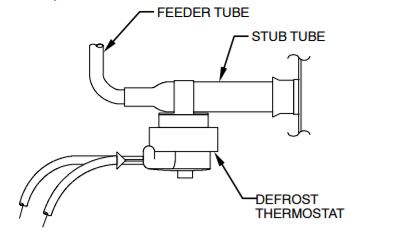Get Tech Tips
Subscribe to free tech tips.
Heat Pump Defrost Sensor vs. Thermostat

When you work on a heat pump system and want to test defrost, you can follow many different test procedures to test the board and sensors.
Most involve “forcing” a defrost by shorting out pins on the board or advancing the time of the defrost initiation and installing a factory-provided pin jumper.
Lots of pins and jumping are involved.
However, you must be able to distinguish whether the system uses sensors or thermostats to initiate and terminate defrost.
A thermostat is an open and closed switch. They are usually round in shape, like the one shown above, and they open within a set temp range and close within a set temp range. The one shown above is a Carrier Defrost Thermostat, and it closes at 30 degrees +/- 3 degrees and opens at 65 degrees +/- 5 degrees. In this case, because this particular sensor closes in colder than 32-degree temps, you can't even use a (freshwater) ice bath to test it.
If it is below 32°F outside, it is easy to test (duh). Otherwise, you can just run it in heat mode with the outdoor fan off and see when it closes by using an ohmmeter and testing against a line temperature clamp in the same location.
On a defrost thermostat, you can also easily jump it out to test the board since it is just open and closed.
A defrost “sensor” is generally a thermistor. A thermistor changes resistance based on the temperature it is exposed to. To test it, you can measure the ambient temperature, make the sensor is removed and acclimated, measure the ohms of resistance, and compare the value to the manufacturer chart.

You CANNOT jump out a thermistor with a typical jumper to test.
—Bryan
P.S. – A podcast about heat pumps, reversing valves, and defrost is available HERE. You can also read about heat pump defrost boards HERE.











Comments
To leave a comment, you need to log in.
Log In